Majeed Kassis
Text Line Segmentation for Challenging Handwritten Document Images Using Fully Convolutional Network
Jan 20, 2021
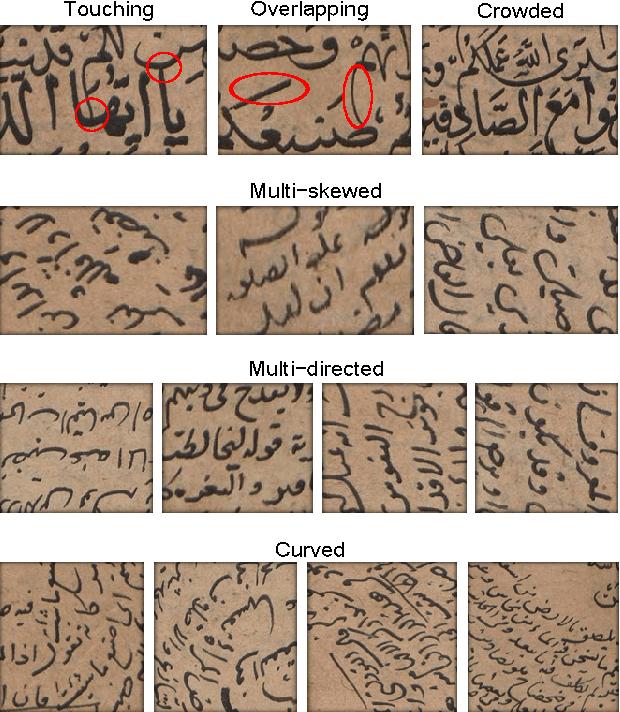

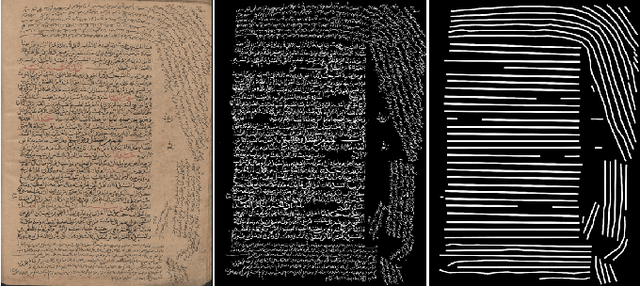
Abstract:This paper presents a method for text line segmentation of challenging historical manuscript images. These manuscript images contain narrow interline spaces with touching components, interpenetrating vowel signs and inconsistent font types and sizes. In addition, they contain curved, multi-skewed and multi-directed side note lines within a complex page layout. Therefore, bounding polygon labeling would be very difficult and time consuming. Instead we rely on line masks that connect the components on the same text line. Then these line masks are predicted using a Fully Convolutional Network (FCN). In the literature, FCN has been successfully used for text line segmentation of regular handwritten document images. The present paper shows that FCN is useful with challenging manuscript images as well. Using a new evaluation metric that is sensitive to over segmentation as well as under segmentation, testing results on a publicly available challenging handwritten dataset are comparable with the results of a previous work on the same dataset.
Writing Style Invariant Deep Learning Model for Historical Manuscripts Alignment
Jun 07, 2018
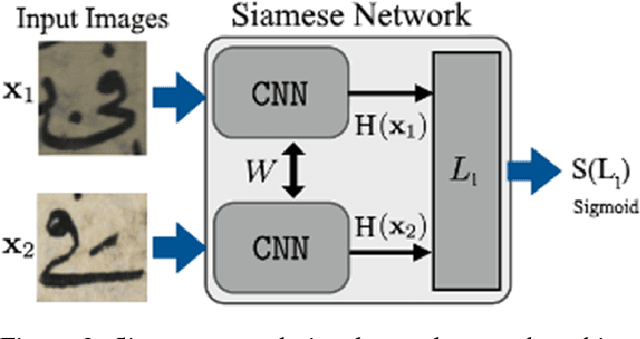
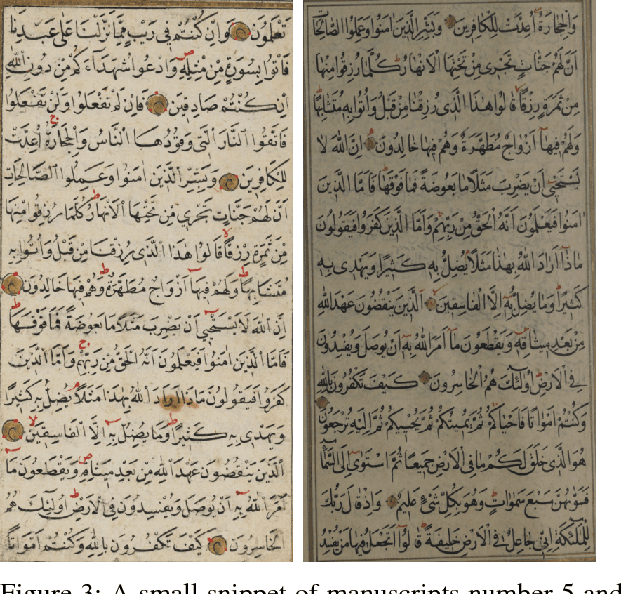
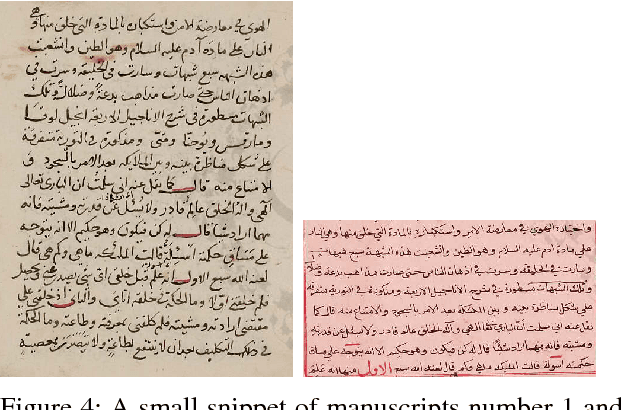
Abstract:Historical manuscript alignment is a widely known problem in document analysis. Finding the differences between manuscript editions is mostly done manually. In this paper, we present a writer independent deep learning model which is trained on several writing styles, and able to achieve high detection accuracy when tested on writing styles not present in training data. We test our model using cross validation, each time we train the model on five manuscripts, and test it on the other two manuscripts, never seen in the training data. We've applied cross validation on seven manuscripts, netting 21 different tests, achieving average accuracy of $\%92.17$. We also present a new alignment algorithm based on dynamic sized sliding window, which is able to successfully handle complex cases.
 Add to Chrome
Add to Chrome Add to Firefox
Add to Firefox Add to Edge
Add to Edge